David Suzuki's Blog, page 36
May 31, 2016
Prominent Canadians call on Ontario to clean up toxic legacy in Grassy Narrows
TORONTO, JUNE 1, 2016 -- A diverse group of celebrities, musicians, artists and advocates -- including Margaret Atwood, Rachel McAdams, Jane Fonda and Phil Fontaine -- has joined the David Suzuki Foundation's call to clean up massive mercury contamination that has plagued the Grassy Narrows First Nation community in northern Ontario for generations. In the 1960s, a pulp mill dumped more than 9,000 kilograms of mercury, a potent neurotoxin, into the English-Wabigoon River.
"For over half a century, mercury has severely poisoned the river that is the lifeblood of the Grassy Narrows First Nation and their neighbours," said renowned broadcaster and scientist David Suzuki. "We must not delay; it is time to make their watershed healthy again so it can sustain future generations."
Earlier this week, scientists released a report concluding that remediation of the English-Wabigoon watershed is possible. The report was supported by leaders from the First Nation, who are demanding the Government of Ontario commit to cleaning up the watershed.
Tomorrow, residents from Grassy Narrows will finish their 1,700-kilometre trip from Grassy Narrows to Queen's Park during the River Run march. Participants will call on Premier Kathleen Wynne to take immediate action to clean up the watershed so it can safely sustain Grassy Narrows' families, culture and economy.
Today, the David Suzuki Foundation is also asking concerned citizens across Canada to join the call to restore the Grassy Narrows watershed by sending a message to provincial and federal leaders. The letter can be found at http://action2.davidsuzuki.org/grassynarrows.
The list of prominent Canadians who have signed the letter include David Suzuki, Stephen Lewis, Rachel McAdams, Wade Davis, Margaret Atwood, Ed Begley Jr., Graeme Gibson, Naomi Klein, Leanne Simpson, Jane Fonda, George Stroumboulopoulos, Phil Fontaine, Mark Hancock (CUPE), Maude Barlow (Council of Canadians), Alex Neve (Amnesty International), Robyn Benson (Public Service Alliance of Canada), Bilan Arte (Canadian Federation of Students), Ghislaine Maxwell (TerraMar Project).
For further information, please contact: Jode Roberts, David Suzuki Foundation, 647-456-9752, jroberts@davidsuzuki.org @joderoberts
Hey! Want more DSF? Join David Suzuki on Facebook

May 30, 2016
How to reuse silica gel packs, part two

Add silica gel packs to containers of homemade kale chips (or apple chips) to keep them crispy. (Credit: Lindsay Coulter)
I gave you six ways to reuse silica gel packs --- found in vitamin bottles and seaweed snacks --- and you gave me another 10.
Add silica gels packs to your:
Toolboxes to prevent tools from rusting. Thanks, Adam, Ella and Chuck!
Musical instrument cases. "They're great. I offer them up to customers at my guitar shop." ~ Adam
Watch (or smartphone) if it takes on water. "If you get your watch wet and the glass fogs up, put it in a sealable plastic bag with a few of these bags." ~ Michelle (and thanks to David, too!)
Containers of homemade kale chips (or apple chips) to keep them crispy. Thanks, Laine!
Recycling cupboard to absorb excess moisture (and cut down on funky smells that can result). Thanks, Laurie!
Seed packages. Thanks, Jim!
Car in the winter to remove moisture from leaky windows. Thanks, Dana!
Camera case and bags. Thanks, Kellie!
Jewellery box. Thanks, Showey!
Night-guard container. Thanks, Gail!
Cliff also offered advice on how to dry out silica gel packs:
Silica can absorb large quantities of moisture. But if you put an item that's dry with a moisture-laden silica gel pack, you risk transferring moisture from the gel to your item until humidity equilibrium is obtained. This is counterproductive. Your microwave can test moisture content. Put the silica in for 30 seconds. If it comes out hot (careful!), it's full of moisture. If it's barely warm -- microwaves only heat water molecules -- it's dry. Too wet? Dry gel packs in the oven at 150 degrees and open the door occasionally to exchange the moisture-laden air for dryer air.
Note: Do not open silica gel packs, and keep them away from children and pets.
Have you come up with other ideas you'd like to share?
Sincerely,
Lindsay Coulter, a fellow Queen of Green
Hey! Want more DSF? Join David Suzuki on Facebook

How to improve your work life, naturally
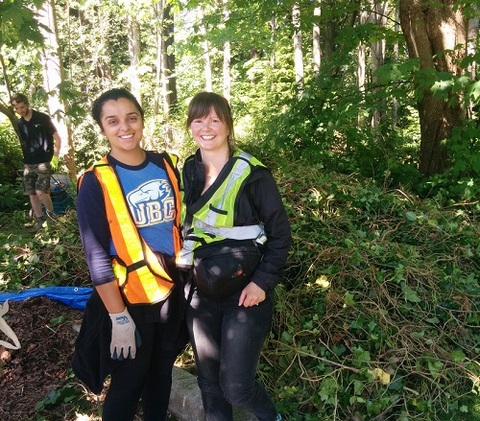
Getting outside makes employees happier and healthier. These 30×30 Nature Challengers are taking action to protect nature by pulling invasive English ivy in Stanley Park.
More than 1,500 workplaces and schools spent 30 days in nature this May participating in the David Suzuki Foundation's 30×30 Nature Challenge. You can cultivate a "nature habit" where you work, too -- starting any time of year!
I quizzed representatives of three companies -- Interface (@Interface), Genuine Health (@GenuineHealth) and Aimia (@AimiaInc) -- about why they get into nature at work.
How can staff let bosses know they need Vitamin "N" (i.e., time in nature)?
Interface: Encourage your employer to walk the talk. Reference research on the benefits of being in nature (download the 30×30NatureChallenge Workplace Toolkit) -- improved performance, productivity and creativity and less absenteeism!
Genuine Health: Pitch it based on your company's core values and share testimonials with your employer. Getting outside makes employees healthier and happier.
Aimia: We made it a friendly competition, a weekly nature photo challenge that added some fun to the office and gave employees a chance to take a break from busy routines, share how they enjoy the outdoors and fall (back) in love with nature!
What are the benefits to workplaces?
Interface: Staff reported feeling more connected to nature. Some individuals went from hating to go outside to requesting more outdoor work activities. They became conscious of suffering from a lack of "green time". (Queen of Greeners call this treeprived.) One employee felt stuck on a challenge, left the building to talk it through outside and had a breakthrough!
Genuine Health: The value of cultivating a "nature habit" is shared across our company. We loved seeing people come together to share stories at our love-lettering station, take walks outside together or catch up after the weekend to talk about their outdoor adventures.
What surprised your workplace about participating?
Interface: The number of associates that registered. It was fun to track their time outdoors with colleagues and share photos of their experiences. Our customers were also interested. It inspired some of firms to sign-up and develop their own internal program to engage employees.
Genuine Health: Despite being staunch believers and advocates for the healing powers of nature, adding that level of commitment to a challenge brought a sense of mindfulness. Also we felt connected to other Canadians doing it at the same time!
Did you get your workplace take part?
Sincerely,
Lindsay Coulter, a fellow Queen of Green
Hey! Want more DSF? Join David Suzuki on Facebook

May 26, 2016
Feeding humanity in a warming world
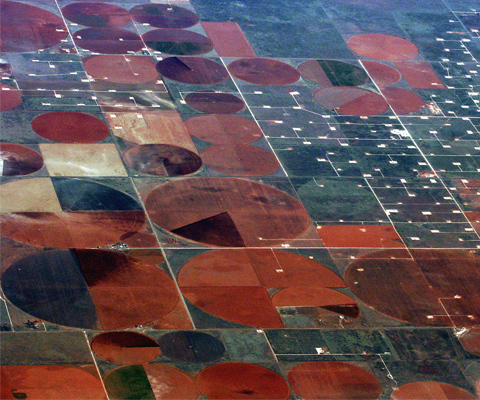
(Credit Jan Buchholtz via Flickr).
Calculating farming's contribution to greenhouse gas emissions is difficult, but experts agree that feeding the world's people has tremendous climate and environmental impacts. Estimates of global emissions from farms range widely. The U.S. Environmental Protection Agency puts them at 24 per cent, including deforestation, making agriculture the second-largest emitter after heat and electricity.
Agriculture contributes to global warming in a number of ways. Methane and nitrous oxide, which are more potent than CO2 but remain in the atmosphere for shorter times, make up about 65 per cent of agricultural emissions. Methane comes mainly from cattle and nitrous oxide from fertilizers and wastes. According to the World Resources Institute, "Smaller sources include manure management, rice cultivation, field burning of crop residues, and fuel use on farms." Net emissions are also created when forests and wetlands are cleared for farming, as these "carbon sinks" usually absorb and store more carbon than the farms that replace them. Transporting and processing agricultural products also contribute to global warming.
We need to eat. So what's the answer? That obesity is epidemic in parts of the world while people starve elsewhere, and that an estimated one-third of food gets wasted, shows improving distribution and reducing waste are good places to start -- but won't be enough to significantly curtail agriculture's contribution to climate change.
Reducing meat and animal-product consumption and production -- especially beef -- would cut emissions, but wouldn't get us all the way.
Some suggest finding better ways to feed as many as nine billion people by 2050 means rethinking our agricultural systems. Industrial agriculture has made it possible to produce large amounts of food efficiently, but comes with problems, including pollution, reduced biodiversity, pesticide resistance and consequent increased chemical use, destruction of forests and wetlands, and human health issues such as antibiotic resistance. Soil loss and degradation, increased drought and flooding and changing growing patterns caused by climate change add to the complexity.
Some say the best fix is genetic modification -- to produce more nutritious plants that can withstand pests and a changing climate. Others note that when humans try to improve on or override nature, the outcome is often not what was expected. And a U.S. National Academies of Science report concludes, "GMO crops have not, to date, increased actual yields." Failing to recognize that everything in nature is interconnected has led to numerous unintended consequences, from DDT causing bird deaths and toxic buildup in the food chain to widespread antibiotic use facilitating the evolution of "superbugs".
The growing field of agroecology -- working with nature -- is one solution. Many researchers argue it's more efficient, less environmentally damaging and more equitable for farmers and local communities than industrial methods and GMOs.
The goal, writes University of California-Berkeley agroecology professor Miguel Altieri, "is to design an agroecosystem that mimics the structure and function of local natural ecosystems; that is, a system with high species diversity and a biologically active soil, one that promotes natural pest control, nutrient recycling and high soil cover to prevent resource losses."
A study by the Rodale Institute, a research organization devoted to organic farming, concluded global adoption of agroecological practices such as "cover crops, compost, crop rotation and reduced tillage" could "sequester more carbon than is currently emitted."
About 40 per cent of Earth's land surface is used for agriculture, entailing massive geophysical alteration, so working with nature as much as possible to maintain or restore balance to natural systems makes sense. Agroecology appears to be a better way to feed humanity than doubling down on industrial agricultural, from many angles: reducing pollution and chemical use, enhancing rather than degrading soils, increasing biodiversity, protecting water, growing healthier food and creating more equitable food systems.
In This Changes Everything, Naomi Klein quotes former UN Rapporteur on the Right to Food Olivier De Schutter: "Today's scientific evidence demonstrates that agroecological methods outperform the use of chemical fertilizers in boosting food production where the hungry live -- especially in unfavourable environments." He further notes, "agroecological projects have shown an average crop yield increase of 80% in 57 developing countries, with an average increase of 116% for all African projects."
We are part of nature, so harming it hurts us. The planet provides resources to feed us. We must learn to use them sustainably.
Hey! Want more DSF? Join David Suzuki on Facebook

May 25, 2016
Ontario acknowledges climate urgency
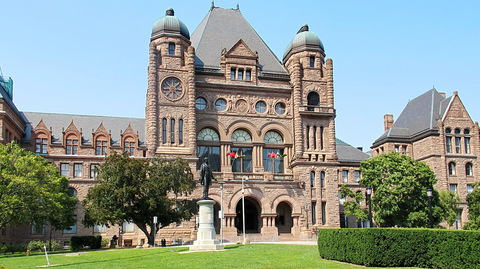
(Credit: Al_HikesAZ via Flickr)
In a recent Globe and Mail article, columnist Jeffrey Simpson attacked Ontario's climate plan, writing that it will be complicated and inflexible and will rely "on government to force-feed change." Putting aside the fact that the authorized version of the plan has not even been released yet -- all we have at this point is a leaked document obtained by the Globe -- the criticisms seem unfair. While some aspects of the plan are problematic, much of it appears highly beneficial.
The plan would invest some $7 billion over four years in a variety of climate-change mitigation projects, including a program to help homeowners transition from natural gas to geothermal or electric heating, initiatives to boost the province's commuter-rail network and efforts to create protected lanes for bicycles. The plan also outlines targets for electric-vehicle sales, saying that by 2025 up to 12 per cent of vehicles sold in the province must be EVs. Perhaps the most audacious aspect of the strategy is its requirement that, from 2030 onward, new homes must be kept warm with electric-powered or geothermal heat exchange equipment.
Money to pay for the plan will come from the new cap-and-trade system, which is projected to generate about $1.9 billion annually from the sale of carbon-pollution permits to business.
Is a program of this scale likely to be complicated? Of course. But complexity is a feature of many important systems -- parliamentary democracy and public health care, to name just two. It's hardly a fatal flaw.
Will the plan be inflexible? This criticism of Simpson's is unfair because flexibility (or its opposite) only becomes clear after a system has had a chance to run for a while and face real-life challenges. Prior to launch, we can't answer this question with any accuracy.
Is the government guilty of "force-feeding" change? It's not obvious what Simpson means by this phrase, but if he's suggesting Ontario is giving business insufficient time to transition he's mistaken. Under the plan, many industries will receive four years of pollution permits without charge. No one can accuse this government of neglecting the needs of Bay Street. In fact, if anything, its approach to business is too generous; two years of free permits would have been more than enough.
Or, is climate-action being rammed down the public's throat? It hardly seems that way. Over time we'll pay a little more for fuel and change how we heat our homes and travel from place to place. But the changes will happen gradually -- the requirement that homes be heated without natural gas won't kick in for over a decade -- and the transition will be facilitated through government grants and rebates. Perhaps most important, the majority of Ontarians give cap-and-trade a thumbs-up. Polling done by Angus Reid in 2015 found it's supported by nearly seven in 10 Ontarians (68 per cent). When people endorse a system, it's difficult to argue they're being force-fed.
It's not clear why Simpson, who has strong environmental sympathies, would give the climate plan such a poor grade. It's not perfect, of course, but it is remarkable in acknowledging the urgency of our climate situation and suggesting appropriate responses. In particular, its proposal to phase out natural-gas heating is exemplary. If this is acted on -- and divisions among cabinet ministers make this a question mark -- it will be a signature achievement.
The best science tells us that if we are to avoid climate catastrophe, the bulk of our fossil fuels need to be left in the ground. Here we have a government that seems to understand this imperative and is taking the first steps toward its realization.
Hey! Want more DSF? Join David Suzuki on Facebook

May 24, 2016
Federal Court requires Canada to review 350+ pesticide products banned in Europe
MONTREAL, MAY 20, 2016 - The Federal Court issued a ruling yesterday that will force the Canadian government to conduct a special review of any pesticide that European countries have banned for health and environmental impacts, including more than 350 pesticide products that are banned in Europe and still used in Canada.
"We are pleased that the Court upheld the federal government's legal responsibility to review pesticides that have been shown to harm human health and the environment," said Équiterre executive director Sidney Ribaux. "It's time to give Canadians the same protections found in Europe."
The Federal Court decision is in response to a lawsuit filed in 2013 by environmental groups Équiterre and the David Suzuki Foundation. The groups had argued that the federal government must review the approval of hundreds of pesticide products containing 23 active ingredients already banned from use in European countries.
The Court agreed with the groups' argument that the federal health minister and Pest Management Regulatory Agency (PMRA) had violated the Pest Control Products Act by failing to conduct special reviews of pesticides that had been banned by member countries of the Organisation for Economic Co-operation and Development (OECD) for environmental or health reasons.
Among the pesticide products that will have to be reviewed are those containing atrazine. Atrazine has been banned in Europe since 2004 but is commonly used on corn crops in Canada. It is one of the most frequently detected herbicides in Canadian surface water and groundwater and has been linked to reduced fertility in humans. The Federal Court decision requires Health Canada reviews the health and environmental impacts posed by atrazine products.
"This court decision is a wake-up call for the Canadian government," said David Suzuki Foundation director-general Jay Ritchlin. "Canada needs to get serious about banning the hundreds of pesticides that have been shown to be harmful yet continue to be used in our homes, yards, fields and forests."
For more information, please contact:
Nadine Bachand, Équiterre, 514.213.3287
Jay Ritchlin, David Suzuki Foundation +1 (604) 961-6840
Hey! Want more DSF? Join David Suzuki on Facebook

May 20, 2016
Volunteers in Action: Meet Estelle
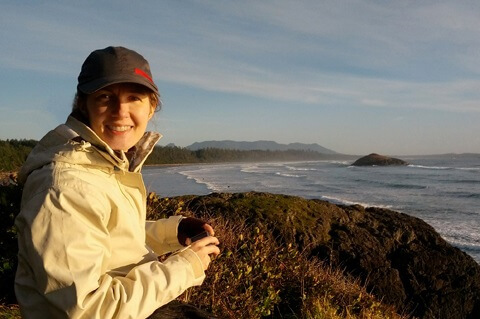
Estelle loves to learn. A researcher since 2009, she's used tree rings as natural archives of forest disturbances such as wildfires and insect outbreaks to assist forest management. Her curiosity has also taken her to remote locations in North and South America, Europe and Australia, and to volunteer with the International Union for Conservation of Nature's forest conservation program.
Eager to learn more about marine ecosystems, Estelle joined the David Suzuki Foundation as volunteer archivist for the Healthy Oceans Program on the Sustainable Howe Sound campaign early in 2014. For two years, she researched the environmental and social history of the Howe Sound region, gathering key historical facts and creating a chronological timeline from the Pleistocene until today. Estelle also contacted local and regional libraries, museums and media outlets to access archive materials from the early 1900s until today and compiled a list of about 500 historical photographs and 200 other documents including maps, videos, newspaper articles, microfilm captures, research papers, reports and theses.
"Researching the environmental and social history of Howe Sound has taught me so much. I have developed a deep appreciation for the natural and cultural heritage of Howe Sound and British Columbia. I feel it is important to contribute to the preservation of our beautiful British Columbia."
Nature inspires Estelle's curiosity and fuels her need for learning and giving back to her community. It also provides peace and harmony, best exemplified by her favorite outdoor memory of sitting on a pontoon by a lake in Northern Finland, basking in the midnight sun.
"I think that in order to make a difference in their community people should start by identifying their passions and what drives them. Introspection is key in this process. People should then get involved with local charities where their skills could flourish through volunteering."
Thanks, Estelle, for your important contribution to our Howe Sound research!
Hey! Want more DSF? Join David Suzuki on Facebook

May 19, 2016
David Suzuki Foundation statement: Federal government must reject NEB's approval of Trans Mountain pipeline project
The National Energy Board's decision to support Kinder Morgan's Trans Mountain pipeline project flies in the face of mounting opposition from communities throughout B.C., 17 First Nations, the Province of B.C. and 20 municipalities representing over two million people. The NEB today recommended approval of the pipeline-twinning project, as long as 157 conditions are met, including 49 environmental conditions.
The David Suzuki Foundation opposes all fossil fuel infrastructure expansion, including this pipeline, which would bring bitumen from Alberta's oilsands to B.C. for export. Expanding fossil fuel development and infrastructure is inconsistent with efforts to prevent a 2 C increase in global average temperature, as committed to in the Paris Agreement.
"Moving ahead with fossil fuel infrastructure won't help us avoid dangerous climate change and is not economically viable as we build a clean energy economy," said David Suzuki Foundation science and policy director Ian Bruce.
In addition to climate concerns, the NEB conditions don't sufficiently deal with risks to coastal ecosystems. "This report doesn't address concerns raised by British Columbians and their governments about the adequacy of oil spill response and the potential environmental and economic harm to communities and precious coastal ecosystems and wildlife," said David Suzuki Foundation Western Canada director-general Jay Ritchlin.
The NEB decision and a Climate Change Canada assessment of the project's upstream greenhouse gas emissions, due May 20, are the first of several processes -- including public hearings and government-to-government consultations with First Nations -- before the federal government decides in December whether or not the project should go ahead.
"We hope feedback from Canadians before a new environmental committee will convince the federal government to reject this proposal," Ritchlin said. "We don't believe British Columbians will let the Government of Canada force a pipeline and tanker traffic where they aren't wanted."
- END -
Media contacts:
Jay Ritchlin, Director-General, Western Canada, David Suzuki Foundation
Phone: 604-961-6840
Ian Bruce, Director of Science and Policy, David Suzuki Foundation
604-306-5095
Hey! Want more DSF? Join David Suzuki on Facebook

Eating less meat will reduce Earth's heat
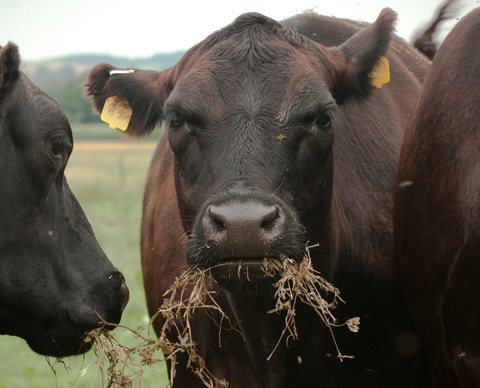
(Photo credit U.S. Department of Agriculture.)
Will vegans save the world? Reading comments under climate change articles or watching the film Cowspiracy make it seem they’re the only ones who can. Cowspiracy boldly claims veganism is “the only way to sustainably and ethically live on this planet.” But, as with most issues, it’s complicated.
It’s true, though, that the environment and climate would benefit substantially if more people gave up or at least cut down on meat and animal products, especially in over-consuming Western societies. Animal agriculture produces huge amounts of greenhouse gas emissions, consumes massive volumes of water and causes a lot of pollution.
But getting a handle on the extent of environmental harm, as well as the differences between various agricultural methods and types of livestock, and balancing that with possible benefits of animal consumption and agriculture isn’t simple.
Estimates of how much animal agriculture adds to greenhouse gases range widely, from about 14 to more than 50 per cent of total global emissions. Agriculture exacerbates climate change in a number of ways. Clearing carbon sinks such as forests to grow or raise food can result in net greenhouse gas increases. Farming, especially on an industrial scale, also requires fossil fuel–burning machinery, as does processing and transporting agricultural products.
Determining the overall contribution is complicated by the fact that livestock agriculture accounts for about nine per cent of human-caused CO2 emissions but far greater amounts of other greenhouse gases, which are worse in many ways but less dangerous in others.
According to the UN Food and Agriculture Organization, livestock farming produces 65 per cent of human-related nitrous oxide, which has 296 times the global warming potential as CO2. It also contributes “37 per cent of all human-induced methane (23 times as warming as CO2), which is largely produced by the digestive system of ruminants, and 64 per cent of ammonia, which contributes significantly to acid rain.” But methane stays in the atmosphere for about 12 years, and nitrous oxide for about 114, while CO2 remains for thousands of years.
Emissions also vary by livestock. Pigs and poultry contribute about 10 per cent of global agricultural emissions but provide three times as much meat as cattle — which are responsible for about 40 per cent of emissions — and use less feed. Some plant agriculture also causes global warming. Wetland rice cultivation produces methane and nitrous oxide emissions, the latter because of nitrogen fertilizer use. Different agricultural methods also have varying effects on climate. And some people, such as the Inuit, have adapted to meat-based diets because fresh produce is scarce — and flying it in causes more emissions than hunting and eating game.
The bottom line is that cutting down on or eliminating meat and other animal products from our diets is necessary for protecting humanity from runaway climate change — and from many other environmental consequences, including water scarcity, degraded ecosystems and pollution of waterways and oceans. The FAO reports that global demand for livestock products could increase 70 per cent by 2050 if nothing is done to slow consumption.
Worldwide meat-consumption rates show there’s room to cut down in industrialized countries, where the average person consumed 95.7 kilograms in 2015, compared to the 41.3-kilogram global average, and 31.6 in developing countries. People in South Asia eat less meat than anyone, at about 7.6 kilograms in 2015.
A study by scientists at the U.K.’s Oxford Martin School found global agriculture-related emissions could be cut by a third by 2050 if people followed simple health guidelines on meat consumption, by 63 per cent with widespread adoption of a vegetarian diet and 70 per cent with vegan. The authors found adopting healthier diets with less meat and animal products could also reduce global health-care costs by $1 billion a year by 2050.
Although switching to better agricultural methods and encouraging local consumption could also reduce emissions, those are topics for another column. In the meantime, we can do our part by at least cutting down on meat, especially red meat, or by taking the more significant step of adhering to a vegetarian or vegan diet.
Perhaps the best dietary advice for our own health and the planet’s is from food writer Michael Pollan: “Eat food, not too much, mostly plants.”
Hey! Want more DSF? Join David Suzuki on Facebook

May 18, 2016
Ontario's new cap-and-trade legislation is a major step for climate
Law entrenches polluter-pay principle and will generate billions for environmental protection
TORONTO -- Ontario's Climate Change Mitigation and Low-Carbon Economy Act will make an important contribution to greenhouse gas reduction, according to the David Suzuki Foundation.
The new law establishes a cap-and-trade carbon pricing system and sets out GHG reduction targets of 15, 37 and 80 per cent below 1990 emission levels for 2020, 2030 and 2050, respectively.
"The legislation is certainly ambitious," said David Suzuki Foundation climate policy analyst Gideon Forman. "In recent years, California's covered emissions were mandated to drop by about two per cent each year. Ontario's targets are set to decrease emissions by about twice that amount."
Forman added, "For years we've called for a polluter-pay system. With the passage of this act, polluters will be paying nearly $2 billion a year -- and that money will buy some extraordinary environmental protection, not to mention a great many jobs."
Detractors have criticized the cap-and-trade program because it means additional costs for home heating and running a car. The Foundation believes the added expenses -- about $5 per month for heating and 4.3 cents per litre on gasoline -- are reasonable and will encourage energy conservation.
"Scientists tell us that the bulk of fossil fuels need to be left in the ground. Carbon pricing gives individuals and business an incentive to use less so these fuels can indeed remain buried," Forman said.
The cap-and-trade system is projected to raise about $1.9 billion annually, which must be spent on initiatives to reduce climate change. A leaked version of the province's climate plan suggests these could include grants to help homeowners replace natural gas heating with geothermal heat pumps, rebates for drivers who purchase electric automobiles and money for municipalities that want to build bike lanes.
The David Suzuki Foundation provided input into the new law by urging the province to curtail the number of free emissions permits given to industry. In the end, the government decided to offer many businesses free permits for four years.
- END -
Media contact:
Gideon Forman
Climate Change Policy Analyst
David Suzuki Foundation
Cell: (647)-703-5957
Hey! Want more DSF? Join David Suzuki on Facebook

David Suzuki's Blog
- David Suzuki's profile
- 247 followers



